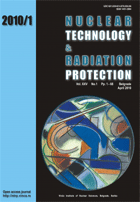
TECHNICAL ASPECTS OF QUALITY ASSURANCE IN MAMMOGRAPHY: PRELIMINARY RESULTS FROM SERBIA
Pages: 55-61
Authors: Monika M. Živković, Tomislav J. Stanić, Olivera F. Ciraj-Bjelac
Abstract
Mammography is the method of choice for early detection of breast cancer. In Serbia, mammography is performed only clinically, although there is a plan to introduce mammography as a screening method. Currently, there are 60 mammographic units in practice, resulting in 70 000 mammographies annually. The survey was conducted in order to investigate mammographic practice in Serbia, identify weak points and suggest appropriate corrective measures. Basic technical parameters of the X-ray tube and generator, processing, image quality, and patient doses in 20 mammographic units were studied. The survey demonstrated considerable variations in technical parameters that affect image quality, and patients doses. Patient dose levels, in terms of the mean glandular dose, were fairly consistent with current European reference levels: 1.8 (0.40-4.3) mGy. However, due to inappropriate image receptors, image processing and viewing conditions and automatic exposure control adjustment, suboptimal image quality was a common finding. Simple improvements of the radiographic technique and maintenance procedure, along with the rigid implementation of the quality control procedure and training of the operating staff, would improve the performance levels of mammographic practice in Serbia, i. e. result in the production of high quality images with a reasonably low radiation risk to patients.
Key words: mammography, quality control, image quality, dose
FULL PAPER IN PDF FORMAT (560 KB)
Last updated on September, 2010
